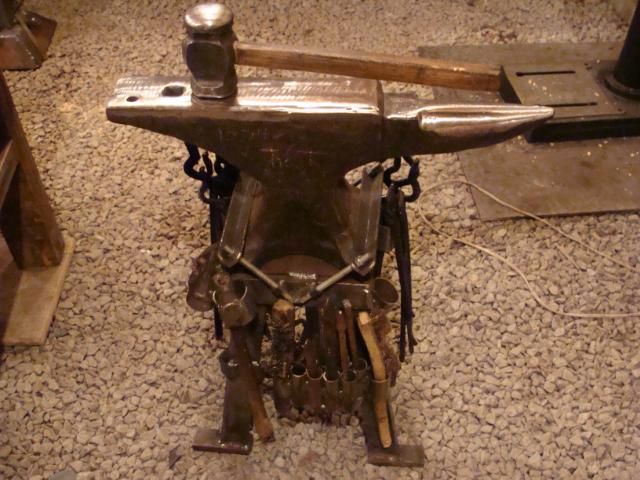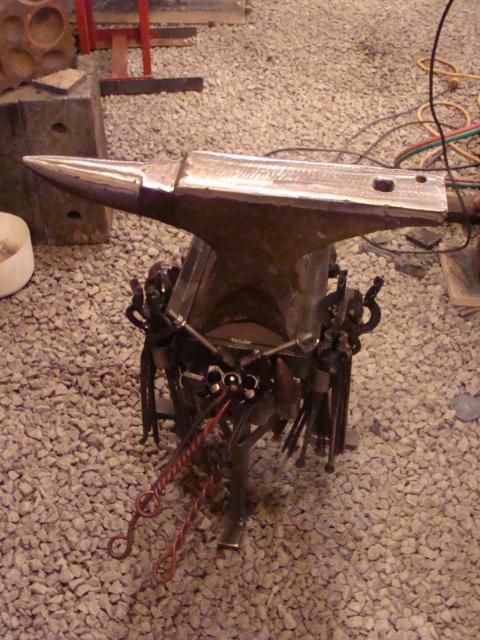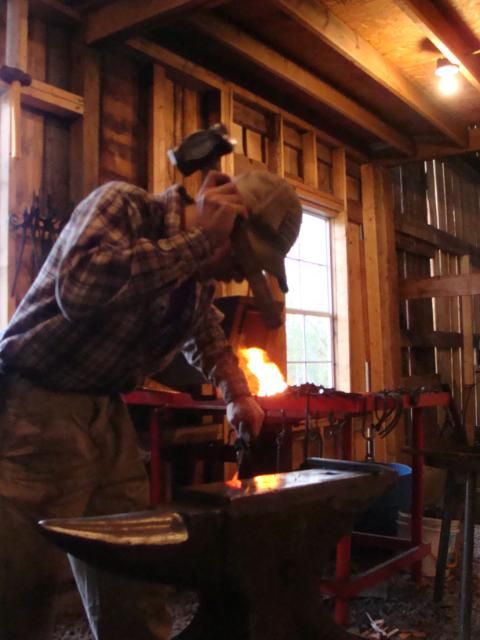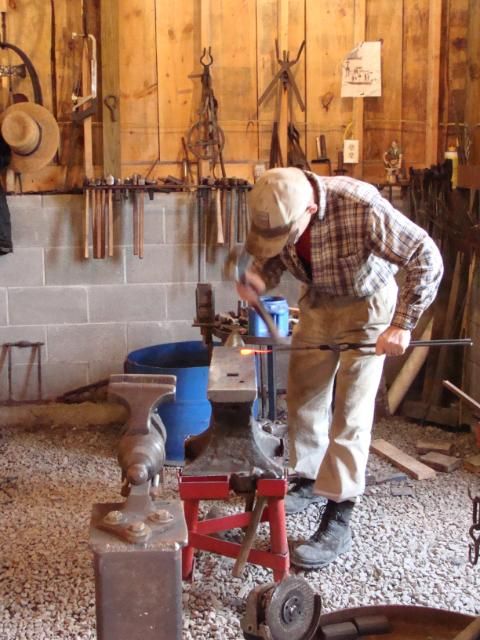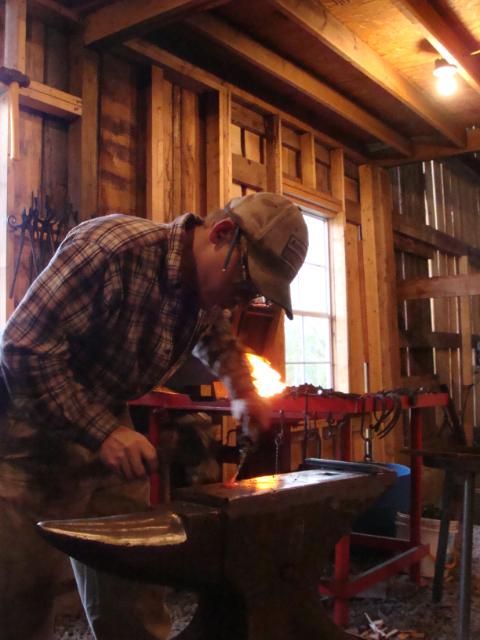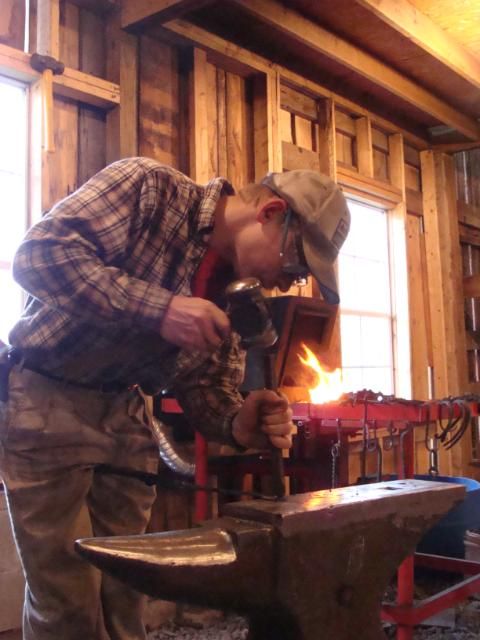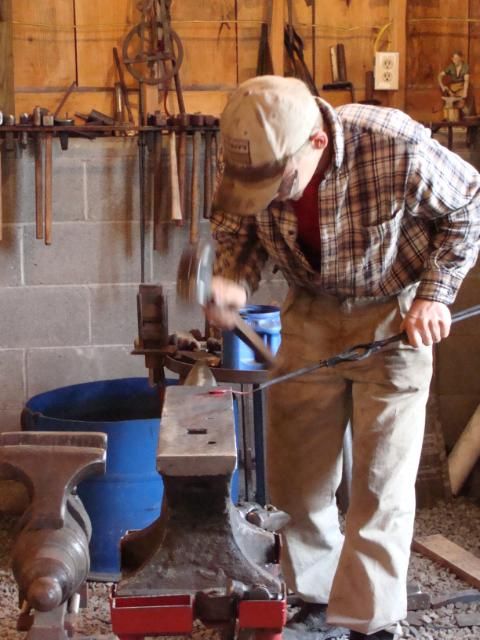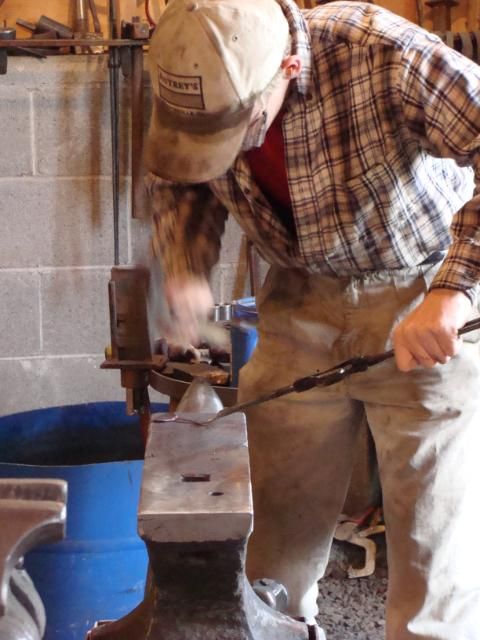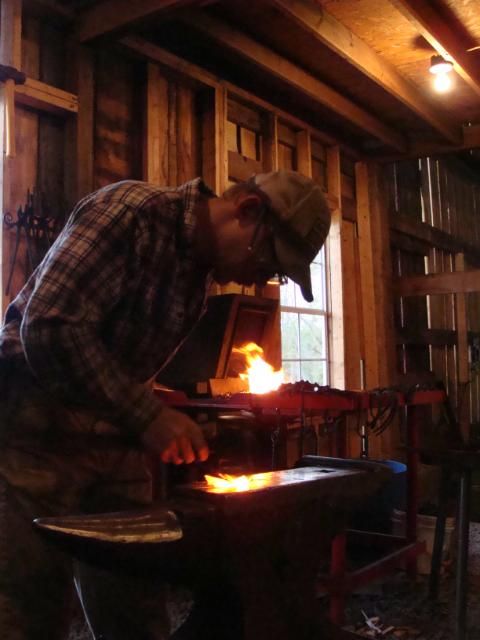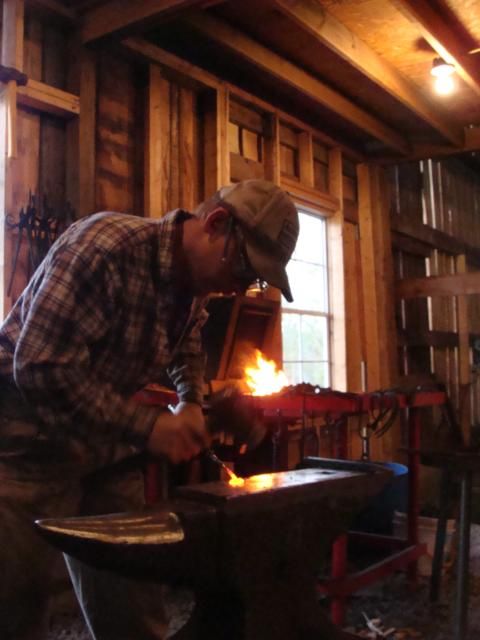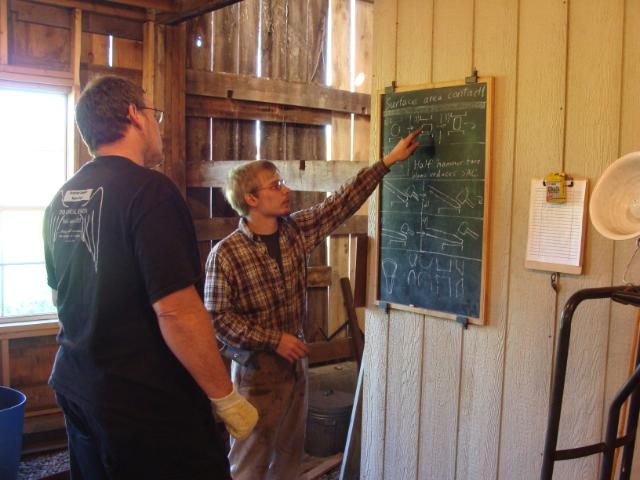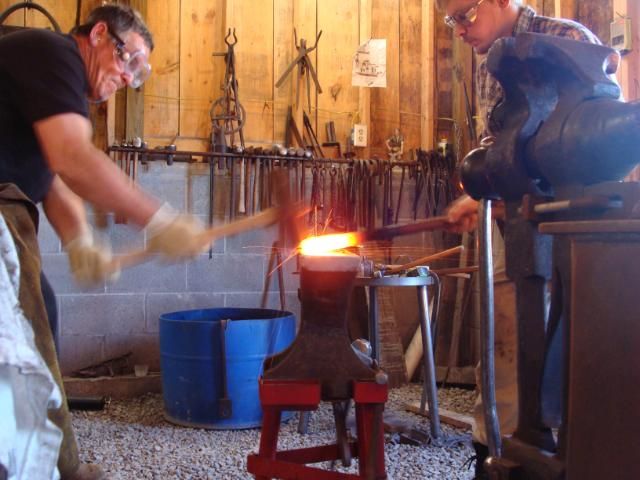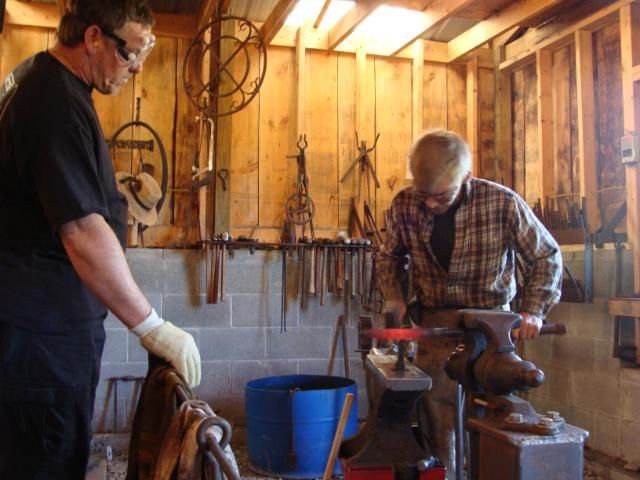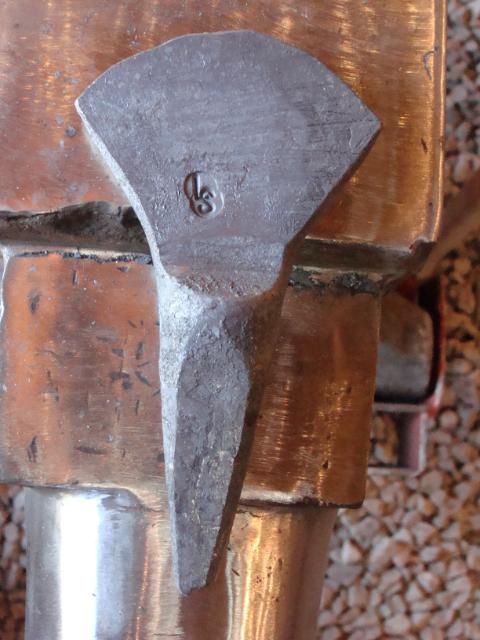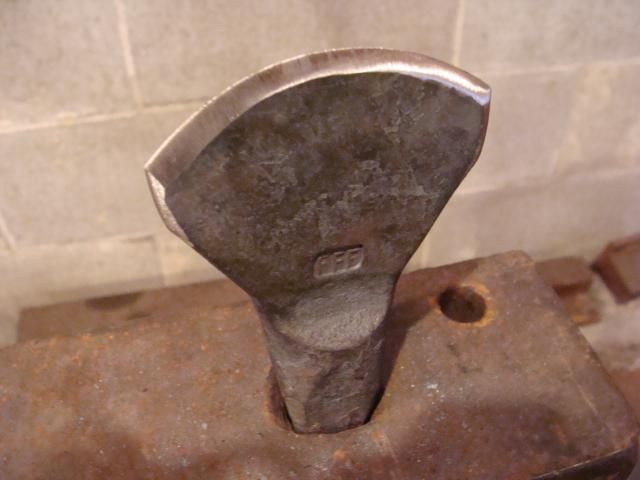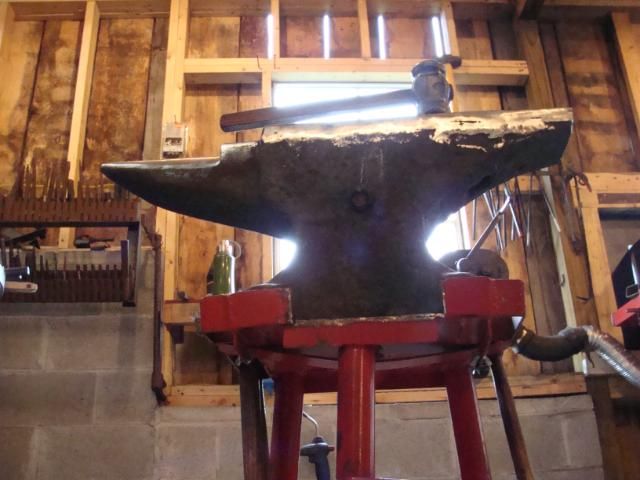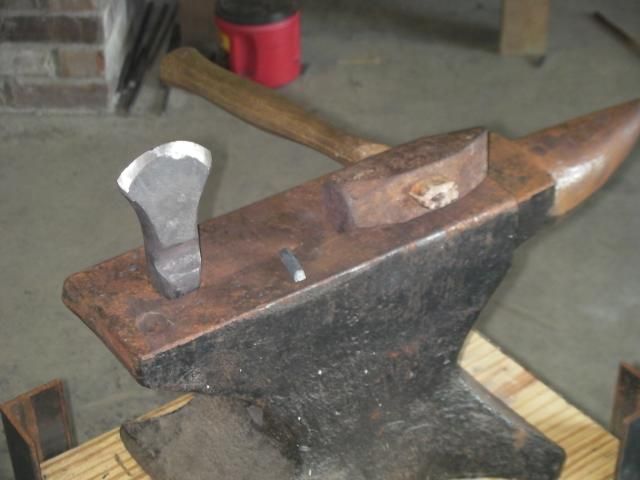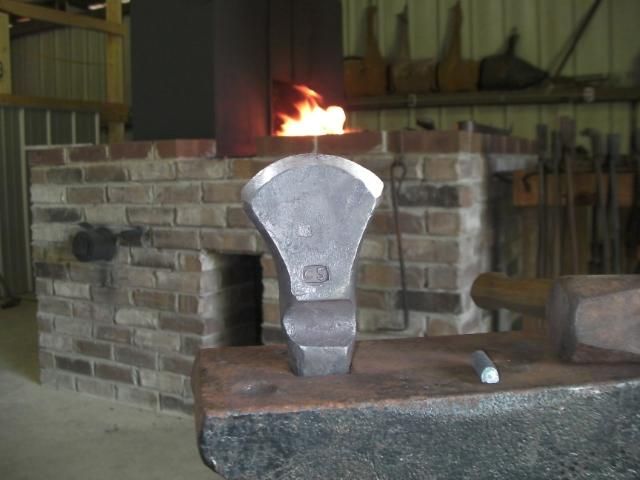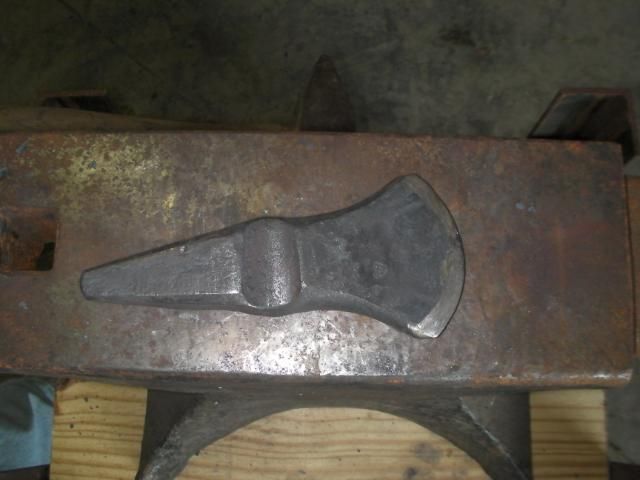Here is a link to the video: http://www.youtube.com/watch?v=FBmC0Mfcs1A&lc=cS7lkjoLDOiuEhGtMyIL1k6zA-Y_tWQTNX4jbP3F950&feature=inbox
Here is the comment left by a guy named Eli:
Dave, you do good work, but whoever taught you to hold a hammer should be taken behind the wood shed for not smacking you everytime you choked up on the hammer. I suggest you get a lighter hammer for this light work you are doing. Chase is a little better with the hammer. You should also have wrote a script for the history of blacksmithing..."1800 years ago the Chinese blacksmithed and then the Europeans and they all developed techniques. Over to you Dave..."
The hammer and hammer technique I use is the one used by Brian Brazeal; a world wide known blacksmith that has been hammering for 30 or so years without his arm giving out. That's the kind of guy you want to trust with your hammer arm. (Most smiths after 30 years have their right arm completely eaten up with tendonitus and other problems because of improper technique.)
There are two aspects to my hammer and techniqe that are a bit different that what is the norm. You bring up both:
#1 the size
#2 choking up on the handle
Let me address the size. This is an extremely simple concept. Most blacksmiths swing a 2.5 to 3 pound hammer for 99% of their work. I used to swing a 2.5 and a 3 pound regularly. The hammer in the video is a 4.5 pound hammer. In blacksmithing, the hammer, NOT YOUR ARM, should be doing the work. If I am trying to forge or bend a piece of 5/16 round (like in the video) which hammer is going to move the metal faster? The lighter one or the heavier one? Obviously the heavier hammer is going to push the metal around faster. The heavier hammer has more energy as it falls onto the metal. Therefore, I have to swing a heavier hammer FAR FEWER times than a smaller hammer. For example it may take four or five blows to get a good corner on 5/16-inch round bar with a 2.5 pound hammer, but with a 4.5 pound hammer I only need to hit it twice. So, even though it is a larger hammer, it requires less energy to forge with it. As a personal example, my work production per day has doubled since switching to the 4.5 pound hammer.
Now for choking up. This concept is also very simple. The easiest way to explain this, is historical weaponry. The large two hand and hand-and-a-half broadswords of the dark ages, had a large steel ball just behind the handle. The ball was weighted and the idea was it helped make the blade feel lighter. Think about it! With a sword, your hand is the pivot point and there is a lot of weight/leverage in the blade and very little weight in the handle. To counter this weight/leverage, a weighted ball is used on the back of the handle, which counters the weight in the blade. Moving up in time, swords got more fancy. The "rapier" and "small sword" were developed. Both of these had lighter blades than the broadsword and heavier handles. The handles were weighted until the whole handle weighed just as much as the blade. As an owner of these swords, I can personally attest to the fact that they are extremely light and fast feeling, even though they weigh several pounds, and the blades are extremely long. The reason why, is the weight that is in and behind your hand.
It's the same way with the hammer. By allowing handle weight behind my hand, I am countering the weight of the hammer head, making the hammer feel light and easier to swing, while still reaping the benefits of the large forging hammer as described above. Try swinging the same hammer by holding it at the end of the handle and you can hardly pick it up off the anvil.
As a final defense, look at Brian Brazeal's youtube channel. You won't find a smith that can move metal more efficiently or faster than he can, and he is using the same size/style of hammer I am. (He and I made mine together.)
http://www.youtube.com/user/brianbrazealblacksmi/videos
Dave Custer
Fiery Furnace Forge Blacksmith LLC

